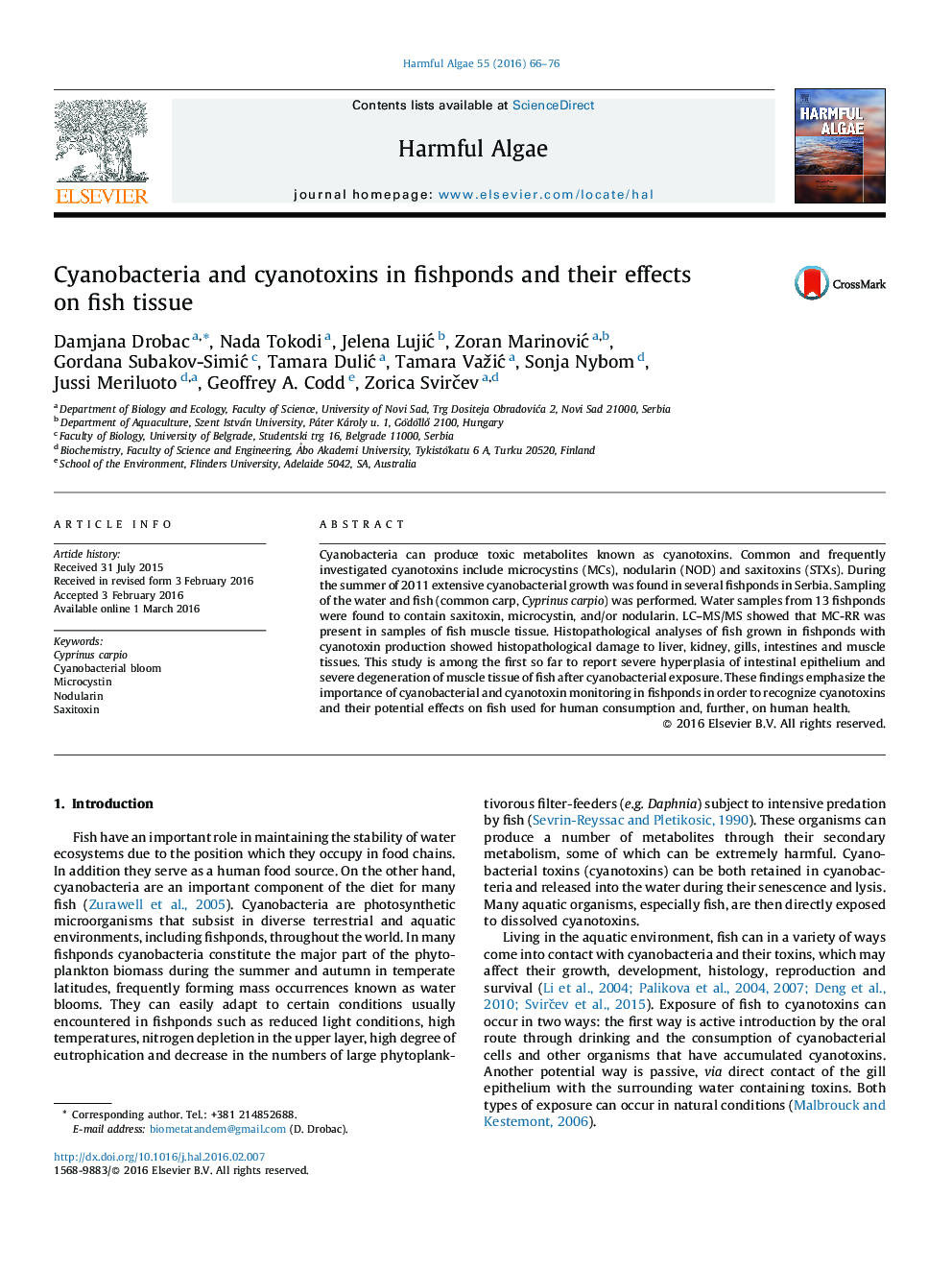| کد مقاله | کد نشریه | سال انتشار | مقاله انگلیسی | نسخه تمام متن |
|---|---|---|---|---|
| 4545130 | 1626916 | 2016 | 11 صفحه PDF | دانلود رایگان |

• Occurrence and effects of cyanobacteria and cyanotoxins was investigated in fishponds.
• LC–MS/MS showed presence of MC-RR in four samples of fish muscle tissue.
• Histopathological changes in fish are noted in liver, kidneys, gills, intestines and muscles.
• Toxic cyanobacterial blooms in fishponds could pose a risk to fish and human health.
Cyanobacteria can produce toxic metabolites known as cyanotoxins. Common and frequently investigated cyanotoxins include microcystins (MCs), nodularin (NOD) and saxitoxins (STXs). During the summer of 2011 extensive cyanobacterial growth was found in several fishponds in Serbia. Sampling of the water and fish (common carp, Cyprinus carpio) was performed. Water samples from 13 fishponds were found to contain saxitoxin, microcystin, and/or nodularin. LC–MS/MS showed that MC-RR was present in samples of fish muscle tissue. Histopathological analyses of fish grown in fishponds with cyanotoxin production showed histopathological damage to liver, kidney, gills, intestines and muscle tissues. This study is among the first so far to report severe hyperplasia of intestinal epithelium and severe degeneration of muscle tissue of fish after cyanobacterial exposure. These findings emphasize the importance of cyanobacterial and cyanotoxin monitoring in fishponds in order to recognize cyanotoxins and their potential effects on fish used for human consumption and, further, on human health.
Journal: Harmful Algae - Volume 55, May 2016, Pages 66–76